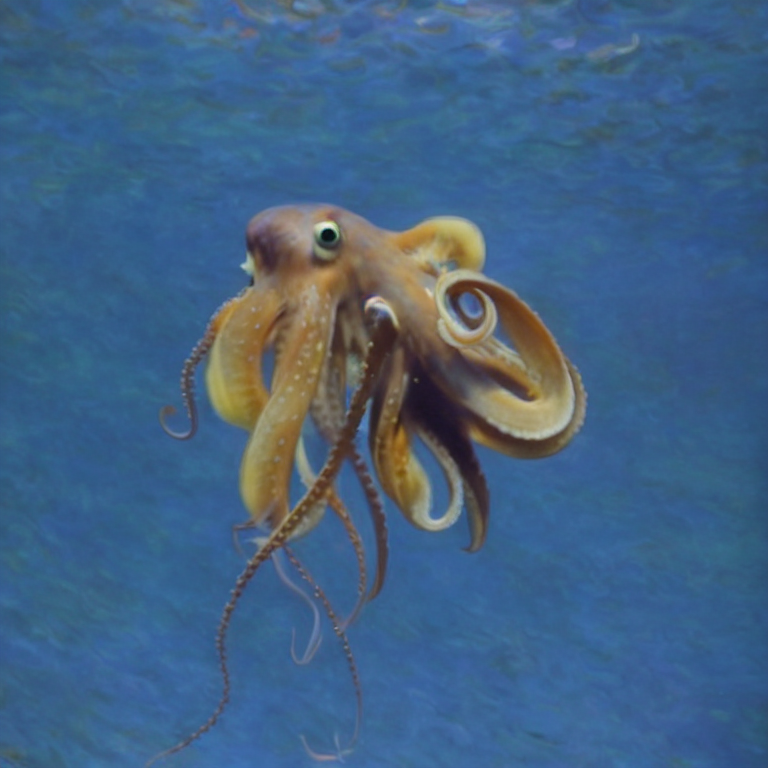In my exploration of biological literature, I discovered the fascinating world of octopus and their unique visual expression capabilities. Certain organisms, like fireflies, glow worms, certain mushrooms, anglerfish, and some jellyfish, are capable of producing and emitting visible light. But cephalopods, a group of mollusks including squid, cuttlefish, and octopus, take it a step further. They have highly developed nervous systems, allowing them to control their many arms and their chromatophoric organs. These special organs, controlled by the central nervous system, allow cephalopods to change their color and adapt their pattern to their environment in milliseconds.
Initially, octopus used this rapid adaptive visual camouflage technique to hide from predators. But in time, changing their skin color become much more than just camouflage, becoming a tool for communication and expressing their mental states.
Their keen vision and sophisticated skin, controlled by their complex brains, allow them to rapidly change their color and shape to fit their environment. Their skin also includes papillae, tiny muscles comparable to human tongue, which can change their orientation, size, and volume very rapidly. We can say that octopus, squid and cuttlefish can both paint and sculpt with their skin, making them performance artists which have mastered their body as the ultimate artistic medium. As human artists dependent on external tools, such as brush and canvas, marble and carving tools, we can only envy octopus and their visual expression capabilities.
The octopus, with its unique way of creating images, serves as an eye-opening parallel to how artificial intelligence works when it comes to image synthesis. The octopus, master of camouflage, brilliantly replicates images, colors, and patterns it picks up, skillfully mixing them together using the sensors on its nimble tentacles. Artificial intelligence similarly collects images from databases, deciphers the patterns and meanings, and uses diffusion models to new images in pixels.
The crucial question here to ask is, what are these generated images used for? What are they communicating, what are they camouflaging, for which purposes can they be used? We are entering into a new era in human culture with artificial intelligence. To understand this alien being, we have to first understand consciousness itself. And maybe we can learn consciousness of another creature, which is far more closely related to us… the octopus.




